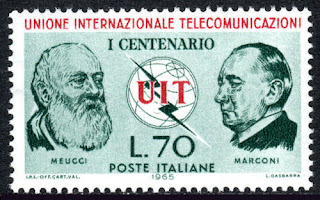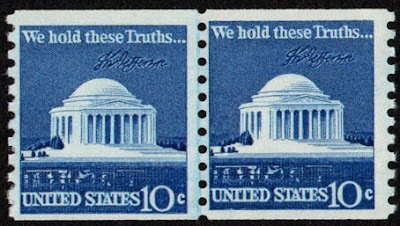1743 Born: Thomas Jefferson, American lawyer and politician, 3rd President of the United States (d. 1826)
Thomas Jefferson (April 13, 1743 – July 4, 1826) was an American statesman, diplomat, lawyer, architect, and Founding Father who served as the third president of the United States from 1801 to 1809. Previously, he had served as the second vice president of the United States from 1797 to 1801. The principal author of the Declaration of Independence, Jefferson was a proponent of democracy, republicanism, and individual rights motivating American colonists to break from the Kingdom of Great Britain and form a new nation; he produced formative documents and decisions at both the state and national level.
During the American Revolution, he represented Virginia in the Continental Congress that adopted the Declaration, drafted the law for religious freedom as a Virginia legislator, and served as the second Governor of Virginia from 1779 to 1781, during the American Revolutionary War. He became the United States Minister to France in May 1785, and subsequently, the nation's first secretary of state under President George Washington from 1790 to 1793. Jefferson and James Madison organized the Democratic-Republican Party to oppose the Federalist Party during the formation of the First Party System. With Madison, he anonymously wrote the provocative Kentucky and Virginia Resolutions in 1798 and 1799, which sought to strengthen states' rights by nullifying the federal Alien and Sedition Acts.
As president, Jefferson pursued the nation's shipping and trade interests against Barbary pirates and aggressive British trade policies. He also organized the Louisiana Purchase, almost doubling the country's territory. As a result of peace negotiations with France, his administration reduced military forces. He was reelected in 1804. Jefferson's second term was beset with difficulties at home, including the trial of former vice president Aaron Burr. American foreign trade was diminished when Jefferson implemented the Embargo Act of 1807, in response to British threats to U.S. shipping. In 1803, Jefferson began a controversial process of Indian tribe removal to the newly organized Louisiana Territory, and he signed the Act Prohibiting Importation of Slaves in 1807. After retiring from public office, Jefferson founded the University of Virginia.
Jefferson, while primarily a planter, lawyer and politician, mastered many disciplines, which ranged from surveying and mathematics to horticulture and mechanics. He was an architect in the classical tradition. Jefferson's keen interest in religion and philosophy led to his presidency of the American Philosophical Society; he shunned organized religion but was influenced by both Christianity and deism. A philologist, Jefferson knew several languages. He was a prolific letter writer and corresponded with many prominent people. His only full-length book is Notes on the State of Virginia (1785), considered perhaps the most important American book published before 1800.
Although Jefferson is regarded as a leading spokesman for democracy and republicanism in the era of the Enlightenment, some modern scholarship has been critical of Jefferson, finding a contradiction between his ownership and trading of many slaves that worked his plantations, and his famous declaration that "all men are created equal". Although the matter remains a subject of debate, most historians believe that Jefferson had a sexual relationship with his slave Sally Hemings, a mixed-race woman who was a half-sister to his late wife and that he fathered at least one of her children. Presidential scholars and historians generally praise Jefferson's public achievements, including his advocacy of religious freedom and tolerance in Virginia. Jefferson continues to rank highly among U.S. presidents.
United States Thomas Jefferson stamps
1808 Born: Antonio Meucci, Italian-American engineer (d. 1889)
Antonio Santi Giuseppe Meucci (13 April 1808 – 18 October 1889) was an Italian inventor and an associate of Giuseppe Garibaldi, a major political figure in the history of Italy. Meucci is best known for developing a voice-communication apparatus that several sources credit as the first telephone.
Meucci set up a form of voice-communication link in his Staten Island, New York, home that connected the second-floor bedroom to his laboratory. He submitted a patent caveat for his telephonic device to the U.S. Patent Office in 1871, but there was no mention of electromagnetic transmission of vocal sound in his caveat. In 1876, Alexander Graham Bell was granted a patent for the electromagnetic transmission of vocal sound by undulatory electric current. Despite the longstanding general crediting of Bell with the accomplishment, the Italian Ministry of Cultural Heritage and Activities supported celebrations of Meucci's 200th birthday in 2008 using the title "Inventore del telefono" (Inventor of the telephone). The U.S. House of Representatives also honored Meucci in a resolution in 2002 for having had some role in the development of the telephone, although the U.S. Senate did not join the resolution and the interpretation of the resolution is disputed.
Italian stamps depicting Antonio Meucci
1943 – The Jefferson Memorial is dedicated in Washington, D.C., on the 200th anniversary of President Thomas Jefferson's birth.
The Jefferson Memorial is a presidential memorial built in Washington, D.C. between 1939 and 1943, under the sponsorship of President Franklin D. Roosevelt. For Roosevelt it was a suitable memorial to the Founding Father of the United States, and the founder of the Democratic-Republican Party, Thomas Jefferson.
The neoclassical Memorial building is situated in West Potomac Park on the shore of the Tidal Basin off the Washington Channel of the Potomac River. It was designed by the architect John Russell Pope and built by the Philadelphia contractor John McShain. Construction of the building began in 1939 and was completed in 1943. The bronze statue of Jefferson was added in 1947.
Pope made references to the Roman Pantheon and Jefferson's own design for the Rotunda at the University of Virginia. The Jefferson Memorial, and the White House located directly north, form one of the main anchor points in the area of the National Mall in D.C. The Washington Monument, just east of the axis on the national Mall, was intended to be located at the intersection of the White House and the site for the Jefferson Memorial to the south, but soft swampy ground which defied 19th century engineering required it be sited to the east.
The Jefferson Memorial is managed by the National Park Service of the United States Department of the Interior under its National Mall and Memorial Parks division. In 2007, it was ranked fourth on the "List of America's Favorite Architecture" by the American Institute of Architects.
US stamps depicting the Jefferson Memorial








No comments:
Post a Comment